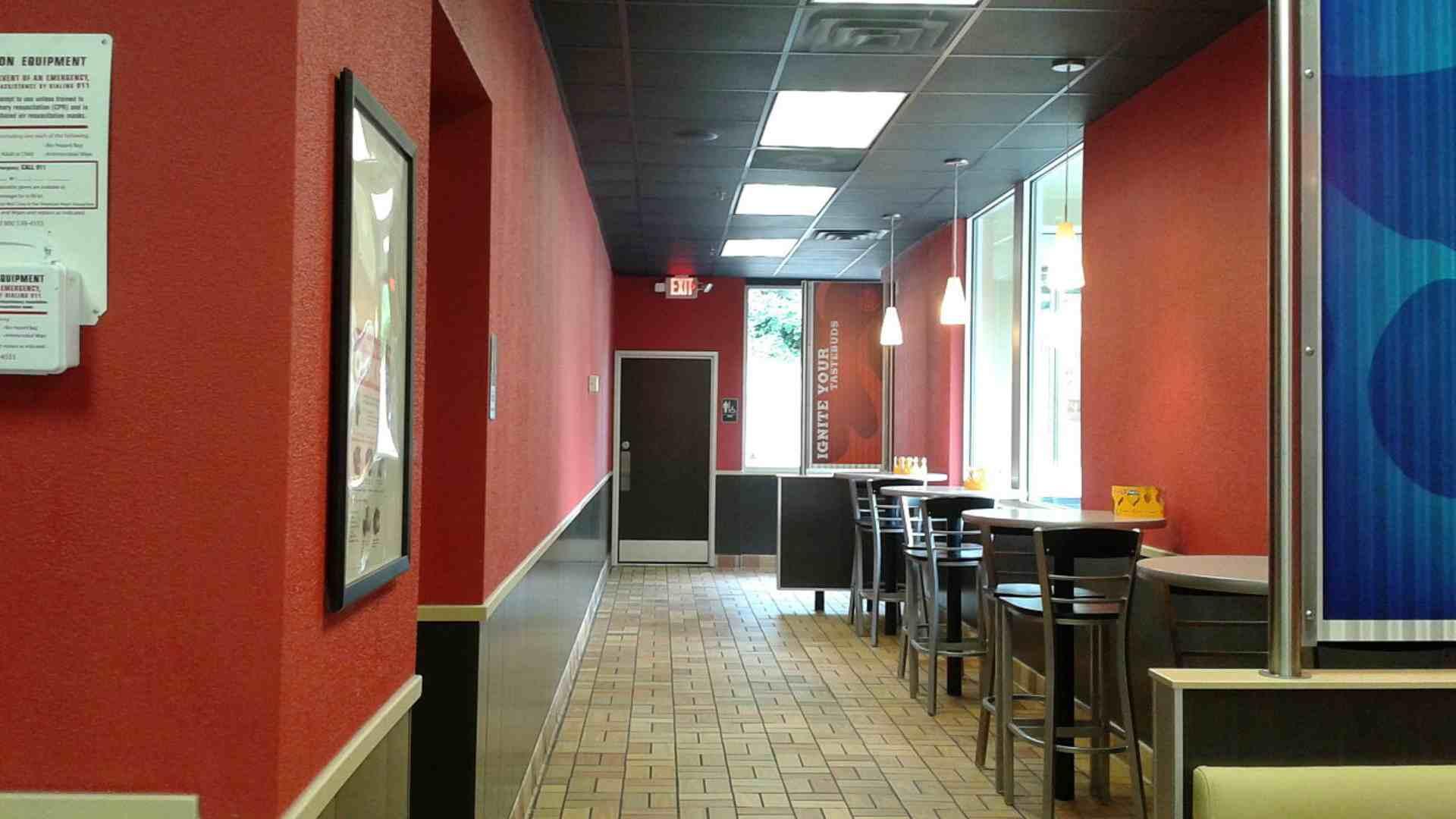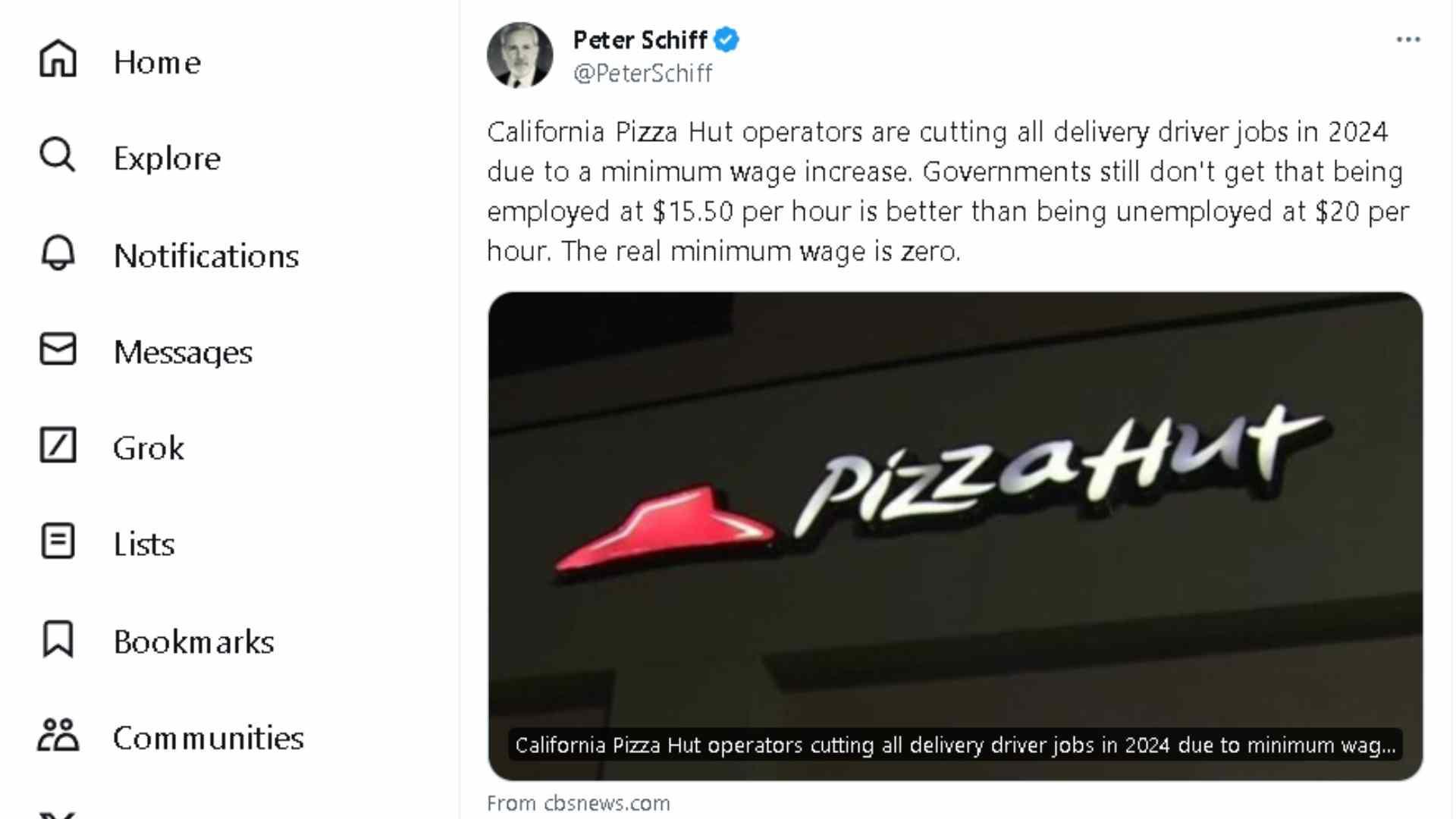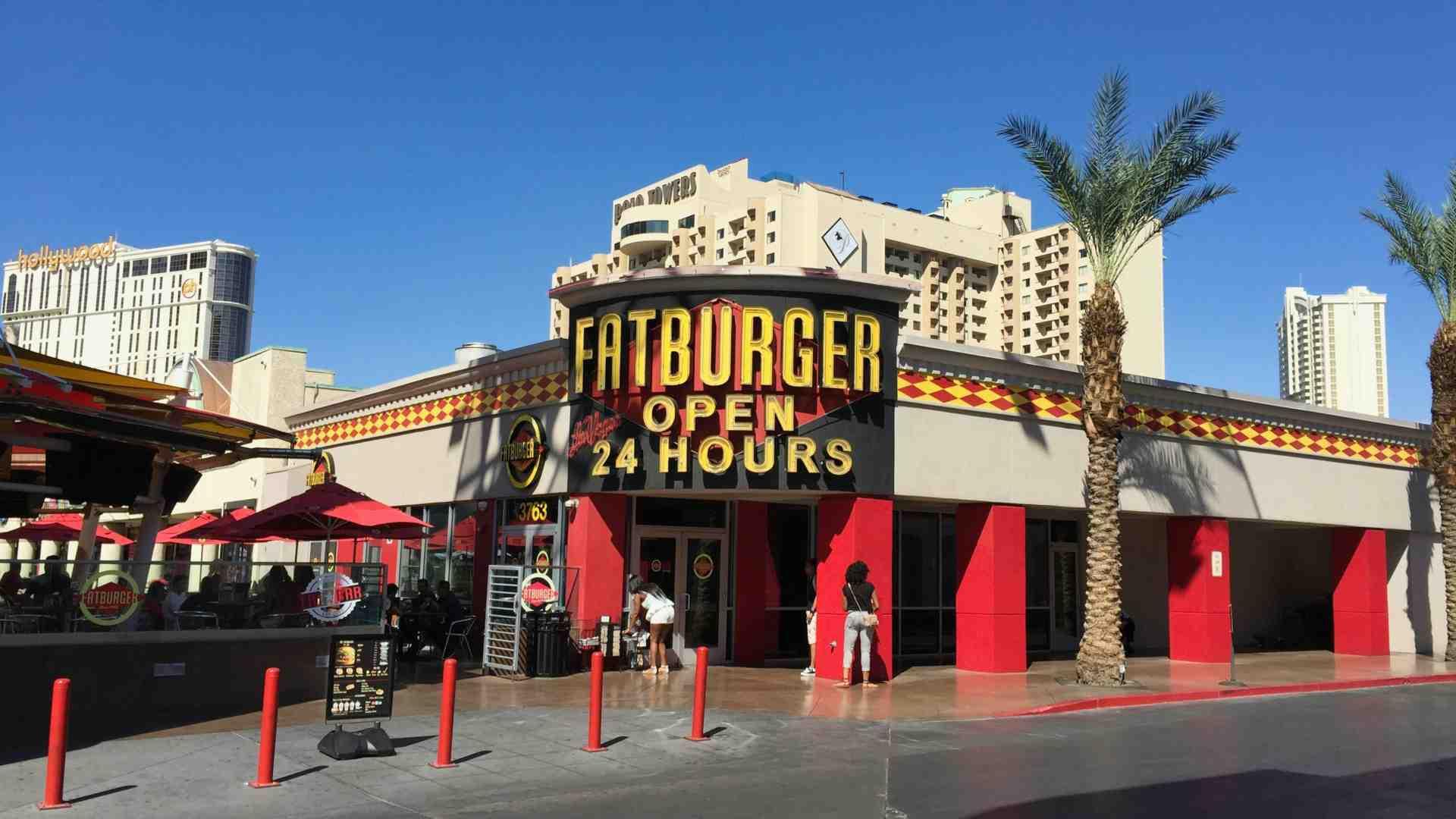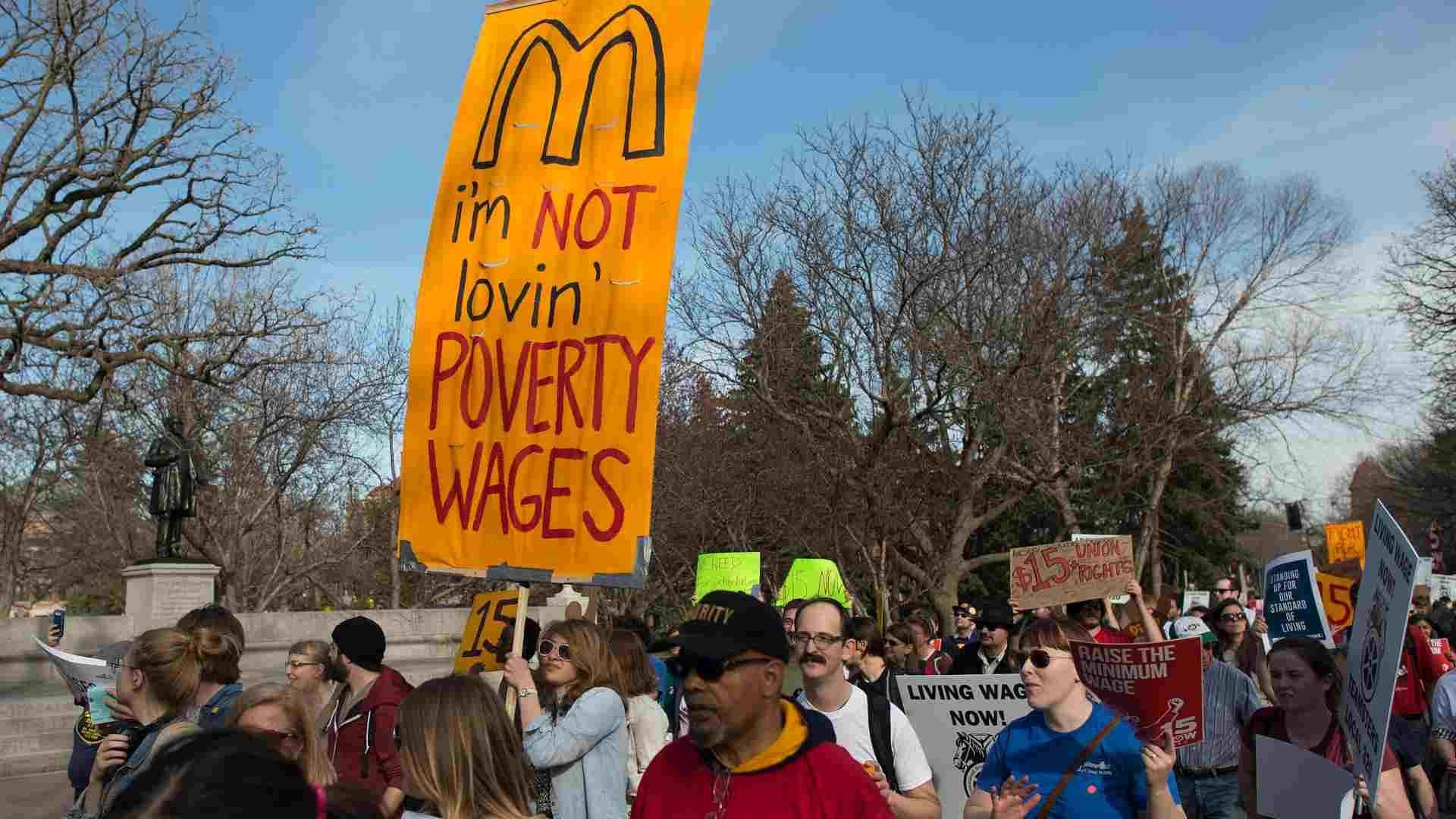California’s minimum wage increase for many fast-food employees is set to take effect in April of this year. Previously, the fast food minimum wage was set at $16. This means a worker making minimum wage could see up to a 20% increase on their take-home checks.
However, many business owners in the state are worrying about how they are going to pay for these forced wage hikes, with some threatening to cut worker hours or raise menu prices to compensate.
Gavin Newsom’s Bill

In September 2023, Governor of California Gavin Newsom signed a bill into law that would increase the minimum wage to $16 an hour in the state on January 1st. However, fast food workers in companies that have 60 or more locations would see a further increase to $20 an hour on April 1st. (via LAist)
The bill also increased the minimum wage for healthcare workers starting in June 2024 to $18, $21, or $23 an hour, depending on their place of employment.
Fast-food Owners Feeling the Strain

These wage increases will impact many businesses that are already struggling to keep their businesses profitable amidst an economy facing high levels of inflation.
While the idea of the minimum wage increase to give workers a livable wage is a good one, Californians might not be prepared for all the consequences the wage increase will bring for themselves as customers and residents.
Pizza Hut Is Already Cutting Workers

Pizza Hut announced a plan shortly after news of the bill’s passage to cut some 1,200 delivery drivers from its employment to cover the costs of this payroll increase. The Los Angeles Times reported in December that the company didn’t directly reference the new bill in its decision, but the timing certainly lined up.
Many of the restaurants affected by the cuts are located in Los Angeles, Riverside, San Bernardino, Sacramento, Tulare, and Kern counties.
Peter Schiff’s Comments

Peter Schiff, an economist and radio host, succinctly outlined the contradiction facing many workers demanding a higher minimum wage.
In response to an article detailing Pizza Hut’s proposed cuts he wrote on X (formerly Twitter): “California Pizza Hut operators are cutting all delivery driver jobs in 2024 due to a minimum wage increase. Governments still don’t get that being employed at $15.50 per hour is better than being unemployed at $20 per hour. The real minimum wage is zero.”
Marcus Wallberg’s Comments

Marcus Wallberg, a fast-food proprietor who owns four Fatburger restaurants in L.A, gave his side of the story in January to Business Insider.
In the interview, he estimated that the new minimum wage law would increase his payroll costs by more than 30%. In response to these costs, he was implementing changes like increases in menu prices, cutting employee hours, and doing away with paid time off for workers.
Franchise Owners Will Take Drastic Measures

Wallberg told Business Insider, “I feel that there will be a lot of pain to workers as franchise owners are forced to take drastic measures.” He expressed he was feeling scared about having to raise prices, given that people are already complaining about their fast-food bills being too high.
For many businesses, it is not as simple as paying workers more; their business models might have to dramatically change to accommodate minimum wage mandates. This shift may cause their customers to think fast food isn’t worth it anymore.
Customer Dissatisfaction with Fast-Food

Customers who are weary from the challenges of a high inflation rate in the economy are already primed to dislike the increase in prices at their local fast-food chains. Restaurant Business Magazine reported that prices have risen as much as 30% on menu items since 2019 in the United States.
With prices rising in such a short time, people may start abandoning fast food altogether for other options. If there are no jobs for people to work at, then it doesn’t matter what the minimum wage is for fast food workers.
Cutting Hours Hurts Everyone

One way businesses can deal with the increased payroll costs in the short term is just to cut the number of hours employees can work. While this may save the business’s financials for now, it is not a sustainable way to create success in the future.
Fewer employees on the job means a worse experience for customers because the remaining employees have to pick up the slack. This means longer wait times for customers, and rushed employees could translate to poor quality of service.
A Hiring Freeze May Be On the Horizon

Another strategy that fast food restaurants can employ is simply to stop hiring new employees. The plan would be to allow their current workforce to naturally reduce itself over time until it reaches a new equilibrium with their payroll budget.
This would be bad for customers because talented people would leave for better employment, leaving lower-skilled workers in their place.
Minimum Wage Increases Push Companies to Try Automation

While the fast food industry has not been taken over by automation yet, workers are finding that computers and AI are increasingly threatening to take their jobs.
Big fast food restaurants like McDonald’s have implemented kiosks in their restaurants so customers can order their food without even talking to anyone at the counter. People can place pick-up orders through a phone app, reducing the need for a drive-through worker.
Business Owners May Leave the State Because of Forced Wage Increase

One concern for customers and workers alike is that these forced wage increases for businesses may incentivize companies to pull out of the state to conduct business with more favorable conditions.
This increased wage cost may also just cause restaurants to go out of business. Many businesses were already struggling to recover from the effects of the pandemic and a high-inflation economy.
Mass Exodus of Restaurants From Some Areas in California

2023 saw a huge closure of restaurants in the state, particularly in the area of Los Angeles.
The Los Angeles Times reported in December that over 65 notable Los Angeles restaurants closed their doors in the area in the span of one year. Restaurants were struggling with rising food costs, and raising prices with customers ultimately did not help them stay in business.
People Are Watching Their Spending

Walter and Margarita Manzke, co-owners of several restaurants in Los Angeles, closed two of their restaurants in 2023, citing depressed customer spending.
In an interview with SFGATE Walter said “Neither of those restaurants were financially very strong coming into this year. I don’t know if we’ve seen the end of how the pandemic has affected restaurants. People are being more careful about where they’re spending their money.”
Owners Might Not Open New Restaurants

Walter also told SFGATE that he might also avoid spending money on opening a new restaurant in the future.
“We’re not looking to open a new restaurant in the next few months. Even chefs who’ve been in the business a long time and have helped to shape LA dining are struggling. It’s tough to get buzz for a new spot,” he said. (via SFGATE)
The Minimum Wage Law Doesn’t Only Affect Big Chains

While California’s minimum wage law is written with the intent to target larger corporations and restaurant chains more, it will have an industry-wide effect that will cause trouble for smaller restaurants as well.
Jeremy Adler, a restaurant partner in Los Angeles said “That law puts pressure on independent restaurants as well. When the average profit margin at a restaurant is 5-7%, 1% really matters.” (via SFGATE)
How the Minimum Wage Increase Effects the Economy

It’s hard not to be sympathetic to calls for corporations to pay fair wages and address the growing disparity between wage stagnation and rising costs in the economy.
However, forcing companies to pay higher wages has widespread effects on the economy that isn’t always positive, and may run counter to the intended goal. Economists remain divided on the efficacy of a minimum wage increase and its ultimate effect on the economy.
Higher Minimum Wage Slightly Depresses Employment Rates

A study published by the University of Chicago examined payroll data to determine what effects minimum wage efforts by states were having on employment and wage spillovers.
The study found that in certain cases the number of low-wage employees slightly decreased. It also found that companies tend to prefer to reduce their workforce size through hiring practices
Consequences of Minimum Wage is Hard to Forsee

One of the dangers of a direct minimum wage increase is that it can cause unexpected behavior in the market that is hard to predict.
For example, companies may decide to compensate for the increased payroll by doing something that is not easily measured, like adjusting employee schedules or cutting benefits that aren’t as easily calculated. To add to worries, external problems in the economy can make it hard to tell just how effective the minimum wage increase actually is.
Hours Per Worker May Decrease

A study reported on by Harvard Business Review from 2021 found that for every $1 the minimum wage increases, the average number of hours each worker at a firm worked decreased by 20.8% in California stores.
The study authors’ reading of the data suggests that this minimum wage increase actually resulted in the total wage compensation of minimum wage workers falling by 13.6%
Increasing Minimum Wage Impacts Employee Benefits

This same study found that this decrease in hours had the effect of decreasing employees’ ability to qualify for benefits.
Typically, a worker needs to be employed at a certain threshold of hours per week to qualify for benefits like healthcare or retirement benefits. This allows companies to flexibly save money on benefits in response to a minimum wage increase.
Work Schedules Suffer From Minimum Wage Increases

As companies are forced to take on higher minimum wage requirements, the consistency of people’s working schedules tends to decrease. This is because companies use worker hours to respond to the increased payroll costs.
Workers under these conditions have a harder time maintaining a balance with their work and personal lives. It also makes it hard for workers to compensate for their reduced hours by taking on another job.
Minimum Wage Increases May Cause Net Loss For Employees

The study further concluded that the combined cost of reduced hours, benefit eligibility, and inconsistent scheduling for employees cost these employees an average of $1,590 per year for a $1 minimum wage increase.
By taking these factors into account, it’s clear that just raising the minimum wage doesn’t allow an employee to enjoy the full benefits of it without any cost.
The Future of Fast Food May Be Changing

Fast food restaurants received a huge gain in popularity over the last century, due to the perception of convenient service and low cost.
However, the fast food of the modern day is losing that feeling of low-cost food, which may cause many people to turn more of their food budget towards grocery delivery or ghost kitchens. These minimum wage increases may play a part in destroying the industry in California.
